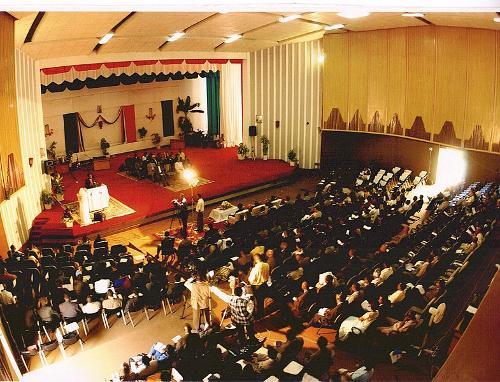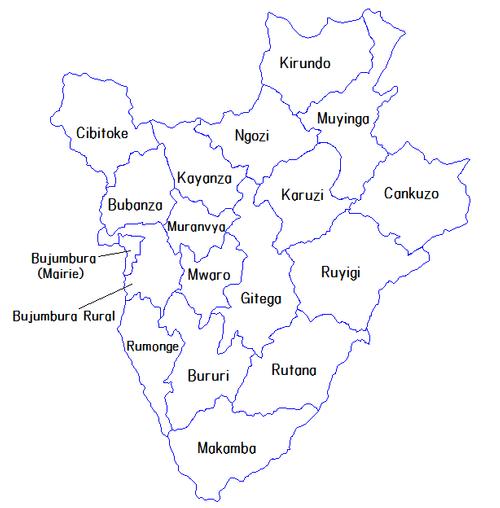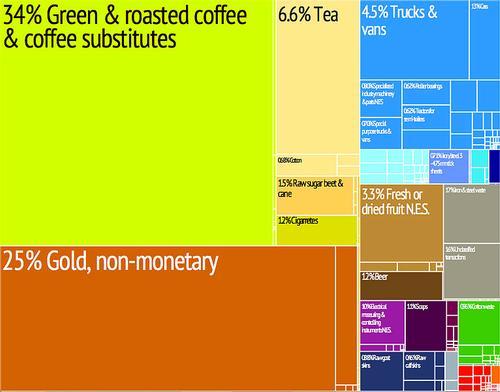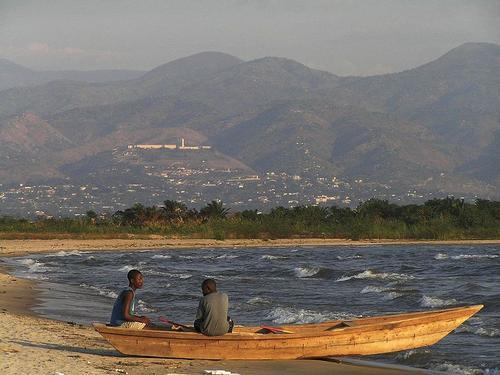BURUNDI
Society

Society
Society
State structure
 Burundi ParliamentPhoto: Viveks 369 CC 4.0 International no changes made
Burundi ParliamentPhoto: Viveks 369 CC 4.0 International no changes made
The constitution of Burundi is based on the Arusha Peace Agreement of August 28, 2000, and the agreements made on that basis. The transitional constitution was adopted in October 2001. The constitution was formally adopted in a referendum on February 28, 2005. A transitional government was installed in January 2002. Official Presidential and Parliamentary elections took place in July and August 2005. The elections were won by the former CNDD-FDD rebel movement at the expense of President Ndayizeye's ruling party Frodebu. The new government, headed by CNDD-FDD president Pierre Nkurunziza, consists of 20 members. The transition phase has come to an end with the inauguration of Pierre Nkurunziza. The current legislative branch consists of 100 members of a directly elected parliament. In addition, 18 have been designated to ensure ethnic and gender composition. There is also the Senate, which consists of 54 senate members.
Burundi is administratively divided into 17 provinces, which in turn are divided into districts and then into communes. Burundian legislation is based on the Belgian one.
Politcs
 Administrative Division of BurundiPhoto: Syanarion62 in the public domain
Administrative Division of BurundiPhoto: Syanarion62 in the public domain
Burundian politics has 21 registered parties. The main national parties are the CNDD (Conseil National pour la défense de la démocratie), this is Hutu dominated, with its armed wing FDD (Forces pour la défense de la démocratie), FRODEBU (Front pour la démocratie au Burundi), from Hutu origin and UPRONA (Union pour le Progrès National), of Tutsi origin. The army is dominated by Tutsis.
On May 1, 2003, Tutsi President Buyoya transferred power to his Hutu Vice President Ndayizeye as agreed. This strengthened confidence in the peace process. President Ndayizeye has further consolidated and expanded the peace process during his term in office. One of the most important achievements under Ndayizeye's reign is the agreement reached between all parties on a new constitution, incidentally after a lengthy negotiation process led by South African Vice President Zuma.
The security situation in Burundi has also improved. In December 2002, three of the four largest rebel groups signed task-fire agreements with the transitional government. At the end of 2003, an additional agreement was concluded between the transition government and the CNDD-FDD. This brought an end to the large-scale civil war. All the positive changes in security have paved the way for all the elections that have taken place. The transition phase came to an end with the inauguration of President Nkurunziza (CNDD-FDD) in August 2005.
The Palipehutu-FNL of Agathon Rwasa is the only one that has remained outside all agreements. Fighting between the Burundian government army against the FNL continues without delay, but is largely limited to three provinces (Bubanza, Bujumbura Rural and Cibitoke). The FNL is a very important party in the peace process. In December, the FNL spokesman indicated that they were willing to enter into negotiations with the Burundian government. However, attacks and other acts of violence continued to be the order of the day. The government intensified its military campaign against the FNL, which also led to many arrests of individuals suspected of belonging to the FNL. In March 2006, the leaders of the FNL for peace talks arrived in Dar es Salaam and negotiations are currently (June 2006), guided by the Regional Initiative, in which South Africa plays a mediating role.
The current political situation in Burundi is described in the chapter history.
Economy

Burundi's economic situation is deplorable. Even now that violence has diminished, the economy is in constant crisis. There is a chronic lack of foreign exchange. There is great unemployment. 64% of the population, especially in rural areas, lives below the poverty line. Agriculture has suffered for consecutive years from lack of rain. Continuing rebel attacks in some areas are also detrimental to agriculture.
In addition to the successive poor harvests due to drought, the associated price increases further affected the standard of living. At the moment, almost a million people depend on food aid.
In order to survive financially and to maintain relations with the "Bretton Woods institutions", a devaluation of the Burundian franc was inevitable in 2002. The Burundian government is currently seeking to approximate the official rate and "street rate" of the Burundian franc.

The main element of the Burundian government's economic policy consists of the "interim strategy", as agreed between the government and the World Bank (interim PRSP). It aims to create conditions for recovery, while trying to stabilize the economy and prevent further slipping into poverty. The government released a program d'urgence in February 2006 ahead of the new full PRSP expected this summer. These positive developments have opened the way for debt relief under the "HIPC (Heavily Indebted Poor Countries)" initiative of the World Bank / IMF. The IMF and WB agreed in August 2005 that Burundi has taken the necessary steps to qualify for an interim debt relief under the HIPC initiative. Net GDP of Burundi increased annually by around 4% in the years 2006 to 2013. Yet the BNP per capita is only $ 700 (2017).
Sources
Elmar Landeninformatie
CIA - World Factbook
BBC - Country Profiles
Copyright: Team The World of Info